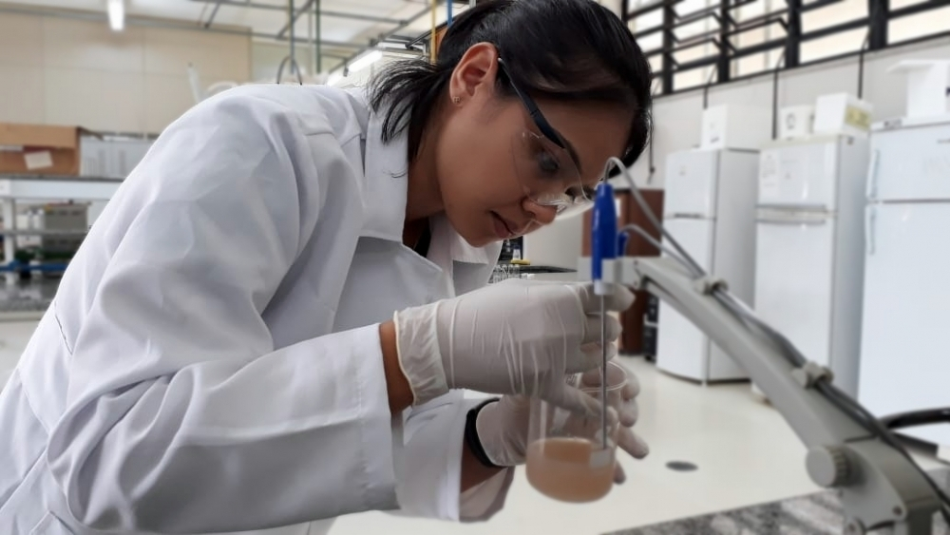Apr 24 2020
A new method has been developed by researchers to diagnose early-stage multiple sclerosis, a medical disorder of the central nervous system, and differentiate it from neuromyelitis optica—a rare but severe autoimmune inflammatory process—that also affects the central nervous system.
 Diagnostic strategy developed by Brazilian researchers can also be used to distinguish MS from neuromyelitis optica, another demyelinating disorder. The two diseases have similar symptoms but must be treated differently. Image Credit: UFSCar.
Diagnostic strategy developed by Brazilian researchers can also be used to distinguish MS from neuromyelitis optica, another demyelinating disorder. The two diseases have similar symptoms but must be treated differently. Image Credit: UFSCar.
The study was performed by scientists at the Federal University of São Carlos (UFSCar) based in Sorocaba (state of São Paulo, Brazil).
In persons who have these diseases, their immune system generates antibodies that attack the myelin sheath, impairing part of this structure. The myelin sheath is an insulating layer that guards the nerves, including those present in the spinal cord and brain, and also helps in transmitting electrical impulses. Over time, permanent lesions develop in the regions of the brain.
With the help of an initially created nanobiosensor that is used to identify heavy metals, herbicides, and other types of pollutants, the UFSCar research team has developed a new technique for visualizing myelin basic protein (MBP) peptides under an atomic force microscope (AFM). These MBP peptides interact with the antibodies present in samples collected from patients.
Atomic force spectroscopy can detect the presence of specific antibodies for each of these two diseases in cerebrospinal fluid and blood serum. If the antibodies are attracted by the peptides deposited on the sensor during the test, this is a sign that the patient has the disease. The device is highly sensitive and can detect a small amount of antibodies, so the method can diagnose the disease at an early stage.
Fabio de Lima Leite, Researcher, Science and Technology for Sustainability Center, Federal University of São Carlos
Leite is also the last author of an article on the technique published in the UltraMicroscopy journal.
Over a decade ago, Leite started to study nanobiosensors with the help of Young Investigator Grant awarded by FAPESP and, since then, he has continued to explore the topic as a principal investigator for Nanoneurobiophysics Research Group (GNN) at UFSCar.
Since neurodegenerative and demyelinating disorders are difficult to diagnose, Leite shifted his research focus from identifying herbicides to detecting antibodies. The medical condition, multiple sclerosis, is often diagnosed clinically based on the MRI scan to detect lesions in specific regions of the brain and the symptoms reported by the patient.
Our method is more accurate, avoiding diagnostic errors, as well as being cheaper. An AFM can cost about 20,000 dollars, whereas an MRI machine costs upwards of 400,000 dollars.
Fabio de Lima Leite, Researcher, Science and Technology for Sustainability Center, Federal University of São Carlos
For scientists, if these diseases are diagnosed in advance, it can lead to earlier treatment with reduced risk of complications.
“There’s no cure, but early diagnosis can give patients quality of life and better treatment,” stated Ariana de Souza Moraes, the article’s coauthor and a scientist at UFSCar article.
In this research, the team utilized the cerebrospinal fluid and serum, collected under the supervision of Doralina Guimarães Brum and Paulo Diniz da Gama, from patients who were suffering from different stages of multiple sclerosis and being treated at the hospital managed by Botucatu Medical School (FMB-UNESP) at São Paulo State University.
Brum is a scientist at the school, while Gama is a neurologist affiliated with the Pontifical Catholic University of São Paulo (PUC-SP) based in Sorocaba.
The samples that were collected were purified by RheaBiotech—Luís Antonio Peroni’s company—with FAPESP’s support under its Innovative Research in Small Business Program (PIPE).
MBP peptides had to be synthesized to create the sensor. This was achieved at the University of São Paulo’s Peptide Chemistry Laboratory, led by Maria Teresa Machini.
“The cerebrospinal fluid and serum were purified, leaving only antibodies in each sample. This enabled us to detect specific antibodies for multiple sclerosis, such as anti-MBP 85-99. If these antibodies are circulating in a patient, they probably have multiple sclerosis. Our next step in the study is to produce a sensor that doesn’t require purified samples,” added Leite.
In yet another study that was recently published in the Scientific Reports journal, UFSCar research team recognized the patients who were suffering from neuromyelitis optica and differentiated them from patients who had multiple sclerosis.
A biomarker for the disease exists, so it was possible to detect the anti-aquaporin 4 antibody in patient samples by the same method as that used to detect multiple sclerosis.
Ariana de Souza Moraes, Study Coauthor and Researcher, UFSCar, Federal University of São Carlos
At present, enzyme-linked immunosorbent assay (ELISA)—an extensively available technique that is cheaper and thus affordable for a majority of the patients, can be used for diagnosing neuromyelitis optica.
“However, this method isn’t as sensitive as the nanoimmunosensor and can’t detect the disease in its early stages,” added Moraes.
The sensor offers another benefit: it can differentiate both the diseases, preventing a usual diagnostic error.
“The two disorders have similar symptoms but different action mechanisms and treatments,” Moraes added further. “An immunomodulator is recommended for one and an immunosuppressant for the other. An incorrect diagnosis can aggravate the disease.”
If a patient with neuromyelitis optica is treated for multiple sclerosis, optic nerve inflammation is accelerated and can’t be reversed. The sensor is expected to represent a major advance for patients with demyelinating disorders,” Moraes concluded.
The article title, “Nanoimmunosensor based on atomic force spectroscopy to detect anti-myelin basic protein related to early-stage multiple sclerosis” was written by Pâmela Soto Garcia, Doralina Guimarães Brum, Osvaldo N. Oliveira Jr, Akemi Martins Higa, and Jéssica Cristiane Magalhães Ierich.
Other authors included Ariana de Souza Moraes, Flávio Makoto Shimizu, Nancy M. Okuda-Shinagawa, Luís Antonio Peroni, Paulo Diniz da Gama, M. Teresa Machini, and Fabio Lima Leite.